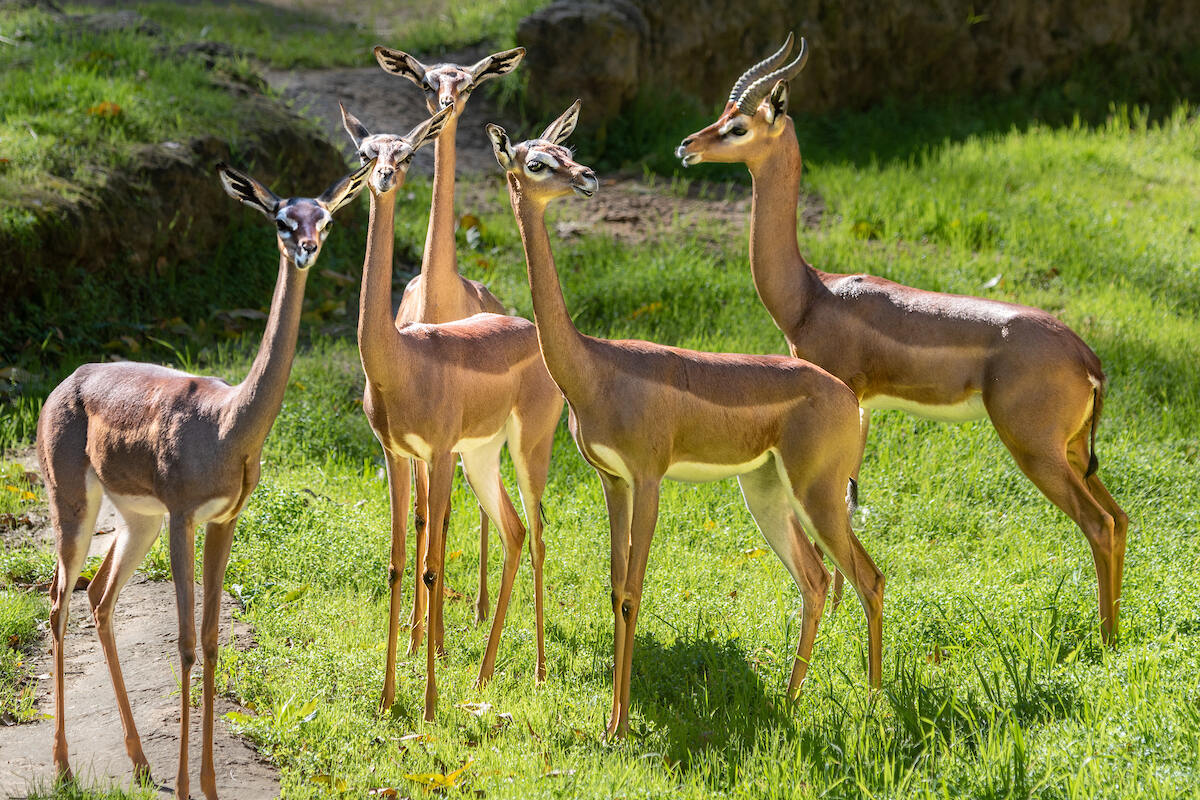
What is a gerenuk? Picture a gazelle with a giraffe's neck. That's a gerenuk! This unique antelope, also known as the giraffe gazelle, roams the dry, thorny bushes of East Africa. Gerenuks stand out with their long necks and legs, allowing them to reach leaves high up in trees that other animals can't. They rarely drink water, getting most of their moisture from the plants they eat. These creatures are known for their ability to stand on their hind legs to reach even higher foliage. Curious about more gerenuk facts? Keep reading to uncover 32 fascinating tidbits about this extraordinary animal!
What is a Gerenuk?
The gerenuk, also known as the giraffe gazelle, is a unique antelope found in East Africa. Its name means "giraffe-necked" in Somali, and it lives up to this name with its long neck and legs. Here are some fascinating facts about this extraordinary creature.
-
Gerenuks have a distinctive long neck, which helps them reach leaves high up in trees that other antelopes can't access.
-
They can stand on their hind legs to browse for food, a behavior rare among antelopes.
-
Gerenuks are found in dry bushy scrublands and deserts in countries like Kenya, Tanzania, and Ethiopia.
-
Their diet mainly consists of leaves, flowers, fruits, and buds from trees and shrubs.
Physical Characteristics
Gerenuks have several unique physical traits that set them apart from other antelopes. Let's explore these features.
-
They have large, dark eyes and ears that help them detect predators.
-
Males have lyre-shaped horns that can grow up to 17 inches long.
-
Females lack horns, making it easy to distinguish between the sexes.
-
Their coat is a reddish-brown color with a lighter underbelly, providing camouflage in their natural habitat.
-
Gerenuks have a slender body and long legs, which contribute to their graceful appearance.
Behavior and Social Structure
Gerenuks exhibit interesting behaviors and social structures that help them survive in their environment.
-
They are primarily diurnal, meaning they are active during the day.
-
Gerenuks are known for their solitary nature, although they can sometimes be found in small groups.
-
Males are territorial and will mark their territory with scent glands located near their eyes.
-
They communicate through a series of snorts, grunts, and whistles.
-
Gerenuks have a unique way of drinking water by bending their knees and lowering their head to the ground.
Reproduction and Lifespan
Understanding the reproduction and lifespan of gerenuks provides insight into their life cycle and survival strategies.
-
Female gerenuks give birth to a single calf after a gestation period of about seven months.
-
Calves are hidden in dense vegetation for the first few weeks of life to protect them from predators.
-
Gerenuks reach sexual maturity at around one to two years of age.
-
In the wild, they can live up to 8 years, while in captivity, they may live up to 13 years.
Predators and Threats
Like all wildlife, gerenuks face various threats in their natural habitat. Here are some of the challenges they encounter.
-
Their primary predators include lions, cheetahs, leopards, and hyenas.
-
Habitat loss due to human activities such as agriculture and urbanization poses a significant threat to their population.
-
Gerenuks are also hunted for their meat and hides, further reducing their numbers.
-
Climate change and prolonged droughts can impact their food sources and water availability.
Conservation Efforts
Efforts are being made to protect and conserve the gerenuk population. Here are some of the measures in place.
-
Several national parks and reserves in East Africa provide protected habitats for gerenuks.
-
Conservation organizations are working to raise awareness about the importance of preserving these unique antelopes.
-
Anti-poaching initiatives aim to reduce illegal hunting and trade of gerenuks.
-
Research and monitoring programs help track gerenuk populations and their health.
Interesting Tidbits
Here are some additional fascinating facts about gerenuks that you might find intriguing.
-
Gerenuks rarely drink water, as they get most of their moisture from the plants they eat.
-
They have a highly efficient digestive system that allows them to extract maximum nutrients from their food.
-
Gerenuks are sometimes called "twiga swala" in Swahili, which means "giraffe antelope."
-
They have a unique way of walking, with a slow, deliberate gait that conserves energy.
-
Gerenuks can go for long periods without drinking water, making them well-adapted to arid environments.
-
Despite their solitary nature, gerenuks will sometimes form loose associations with other antelope species for added protection against predators.
Final Thoughts on Gerenuks
Gerenuks are truly fascinating creatures. Their unique adaptations, like their long necks and ability to stand on two legs, make them stand out in the animal kingdom. These antelopes thrive in harsh environments where many others can't survive. They don't need to drink water often, getting most of their hydration from the plants they eat. This makes them incredibly resilient. Their diet mainly consists of leaves, flowers, and fruits from trees and bushes. Gerenuks also have a low population density, making sightings rare and special. Conservation efforts are crucial to ensure their survival, as habitat loss and hunting pose significant threats. By understanding and appreciating these unique animals, we can help protect them for future generations. So next time you think of antelopes, remember the remarkable gerenuk and its incredible adaptations.
Was this page helpful?
Our commitment to delivering trustworthy and engaging content is at the heart of what we do. Each fact on our site is contributed by real users like you, bringing a wealth of diverse insights and information. To ensure the highest standards of accuracy and reliability, our dedicated editors meticulously review each submission. This process guarantees that the facts we share are not only fascinating but also credible. Trust in our commitment to quality and authenticity as you explore and learn with us.
